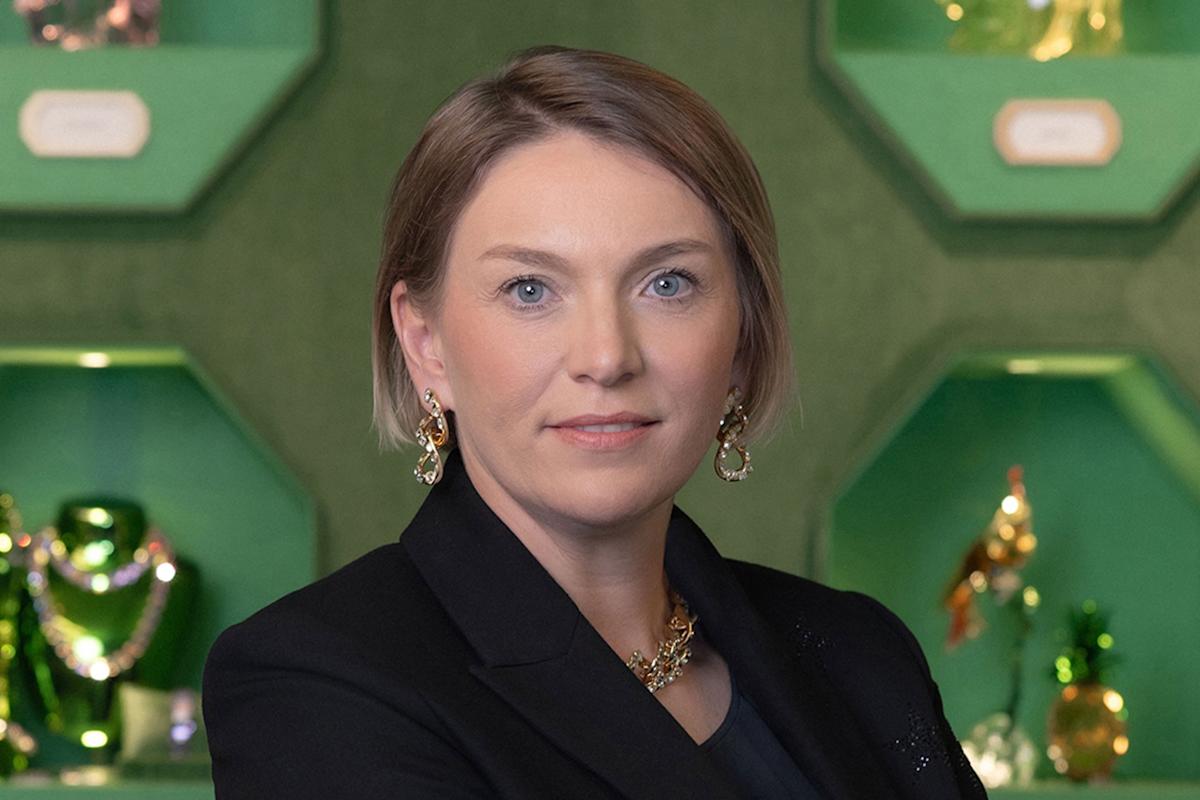While studying at the University of Vienna, Lea Sonderegger’s PhD research focused on omnichannel retail, arguing that consumer spending would increasingly blend across the physical and digital worlds.
“At the time, omnichannel was just a concept on paper,” says Sonderegger, who completed her studies at the University of Vienna in 2010. “Nobody believed that people would buy online and actually pick up the stuff in a store.”
It proved to be a prescient pitch that caught the attention of Swarovski, who hired Sonderegger 15 years ago to serve as an e-business project manager for the luxury jewelry retailer. Today, three out of every four American shoppers are omnichannel, accounting for 27% of total retail spending, according to research published by credit-card giant Capital One.
Over the course of her technology career at the crystals and gemstones manufacturer, Sonderegger has risen up the ranks, taking on increasing responsibilities that included oversight of the main e-commerce business for swarovski.com, operations in China, and eventually a successor for the chief information role that would be combined with the chief digital officer title in 2022.
Sonderegger reports directly to CEO Alexis Nasard and sits on Swarovski’s executive committee, a prime position that reflects the importance of digital commerce as a core pillar of Nasard’s “LUXignite strategy,” which the executive unveiled in 2022 that included a focus on opening new flagship stores, including a shop on New York’s Fifth Avenue that opened in late 2023. He also lauded a commitment to investing in digital experiences, a key modernization effort for a brand that began in 1895.
Reporting to Nasard, Sonderegger says, “makes a huge difference, because I’m sitting [at] the table with all of my executive committee peers and digital is right at the place where all the things are decided and driven.”
Sonderegger says despite its long history, Swarovski has always been an early adopter when it comes to consumer-focused technologies. The company opened a web-based online shop in 2001, then a mobile website in 2010 and an online store two years later. Today, 80% of the company’s online transactions come via mobile.
As consumer shopping patterns have migrated online, Swarovski’s approach has evolved. The company now offers “to “buy online, pick up in store” and even a service that allows shoppers to order something from a local shop and have it shipped to their home within a single day.
The retailer has credited the “LUXignite” strategy for why the company reported a 6% increase in revenue for the fiscal-year 2024, as well as an operating profit that was fully positive for the first time in five years.
While studying at the University of Vienna, Lea Sonderegger’s PhD research focused on omnichannel retail, arguing that consumer spending would increasingly blend across the physical and digital worlds.
“At the time, omnichannel was just a concept on paper,” says Sonderegger, who completed her studies at the University of Vienna in 2010. “Nobody believed that people would buy online and actually pick up the stuff in a store.”
It proved to be a prescient pitch that caught the attention of Swarovski, who hired Sonderegger 15 years ago to serve as an e-business project manager for the luxury jewelry retailer. Today, three out of every four American shoppers are omnichannel, accounting for 27% of total retail spending, according to research published by credit-card giant Capital One.
Over the course of her technology career at the crystals and gemstones manufacturer, Sonderegger has risen up the ranks, taking on increasing responsibilities that included oversight of the main e-commerce business for swarovski.com, operations in China, and eventually a successor for the chief information role that would be combined with the chief digital officer title in 2022.
Sonderegger reports directly to CEO Alexis Nasard and sits on Swarovski’s executive committee, a prime position that reflects the importance of digital commerce as a core pillar of Nasard’s “LUXignite strategy,” which the executive unveiled in 2022 that included a focus on opening new flagship stores, including a shop on New York’s Fifth Avenue that opened in late 2023. He also lauded a commitment to investing in digital experiences, a key modernization effort for a brand that began in 1895.
Reporting to Nasard, Sonderegger says, “makes a huge difference, because I’m sitting [at] the table with all of my executive committee peers and digital is right at the place where all the things are decided and driven.”
Sonderegger says despite its long history, Swarovski has always been an early adopter when it comes to consumer-focused technologies. The company opened a web-based online shop in 2001, then a mobile website in 2010 and an online store two years later. Today, 80% of the company’s online transactions come via mobile.
As consumer shopping patterns have migrated online, Swarovski’s approach has evolved. The company now offers “to “buy online, pick up in store” and even a service that allows shoppers to order something from a local shop and have it shipped to their home within a single day.
The retailer has credited the “LUXignite” strategy for why the company reported a 6% increase in revenue for the fiscal-year 2024, as well as an operating profit that was fully positive for the first time in five years.











Leave feedback about this